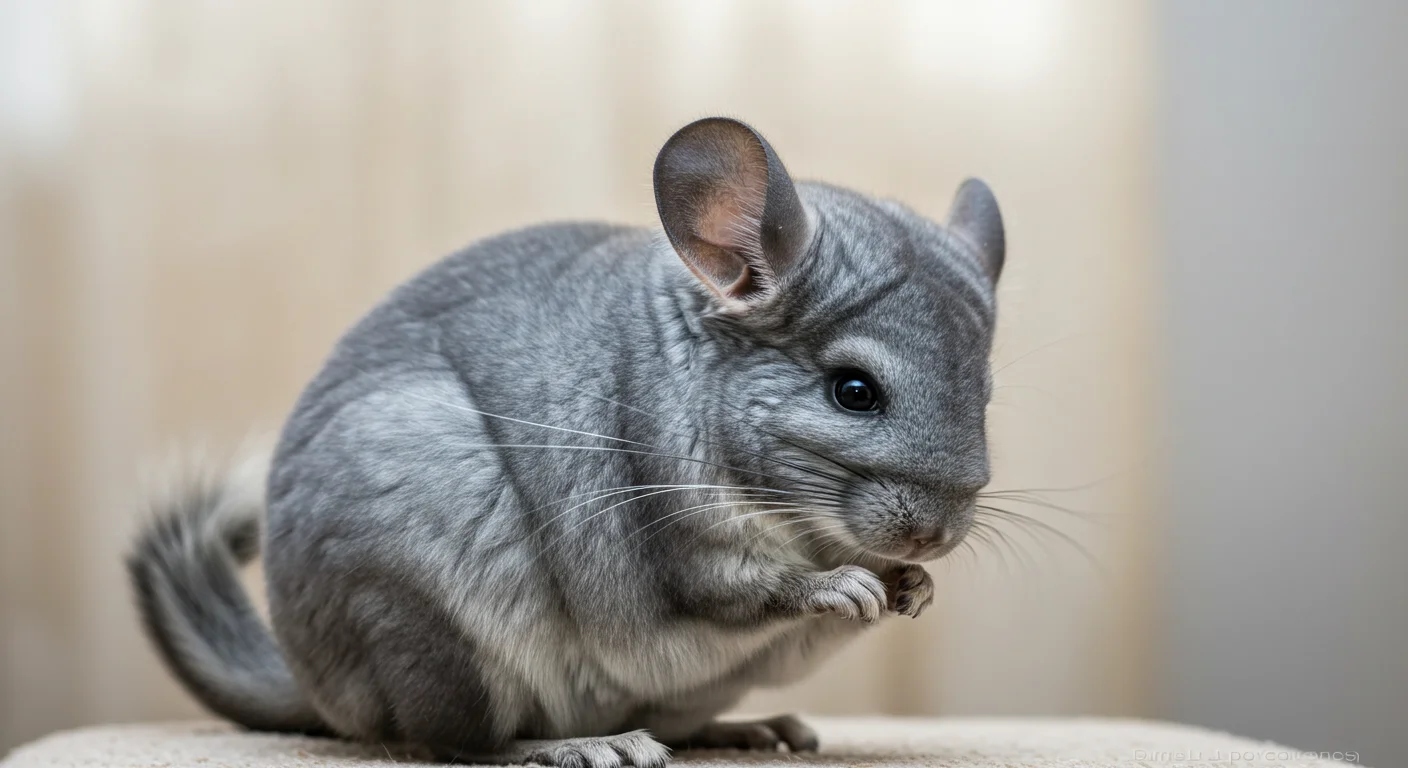Chinchilla Allergies: What Owners Should Know
Chinchillas are sometimes touted as “hypoallergenic” pets, but this is largely a misconception. While they might be less likely to cause allergies than some other furry animals like cats or dogs for *some* individuals, people can certainly be allergic to chinchillas or, more commonly, to the things associated with their care, such as hay or dust. Understanding potential allergens and management strategies is important for prospective and current owners.
Can Chinchillas Cause Allergies?
Yes. Allergies are complex immune system responses to proteins found in an animal’s dander (skin flakes), saliva, or urine. While chinchillas produce less dander than some pets and don’t typically drool on people, these allergens still exist.
More frequently, however, people react not to the chinchilla itself, but to elements essential for their care:
- Hay: Timothy hay, orchard grass, and other hays are common allergens for many people (hay fever). This is often the primary culprit.
- Dust Bath Dust: The fine volcanic dust used for baths can become airborne and irritate airways or skin.
- Bedding: Certain wood shavings (especially if dusty) or other bedding materials can trigger reactions.
Sources of Allergens
| Source | Allergen Type | Commonality |
|---|---|---|
| Hay (Timothy, Orchard, etc.) | Pollen, Dust, Mold Spores | Very Common |
| Dust Bath Dust | Fine Particulates | Common |
| Bedding (Wood Shavings) | Wood Dust, Natural Oils | Fairly Common |
| Chinchilla Dander/Saliva/Urine | Proteins | Less Common than Hay/Dust |
Symptoms of Chinchilla Allergies
Allergic reactions can range from mild to severe and may include:
- Sneezing, runny or stuffy nose
- Itchy, watery eyes
- Skin reactions: Itchy rashes, hives (urticaria), eczema flare-ups (especially after handling the animal or contact with bedding/hay)
- Respiratory symptoms: Coughing, wheezing, shortness of breath, asthma exacerbation
Symptoms often worsen during cage cleaning, handling hay, or when dust baths are given.

Diagnosis: Is it Really the Chinchilla?
If you suspect an allergy, it’s important to pinpoint the source.
- Timing: Do symptoms flare up specifically after interacting with the chinchilla, its cage, hay, or dust?
- Elimination Test: If possible, have someone else handle cage cleaning and hay duties for a period to see if symptoms improve.
- Medical Consultation: See an allergist. They can perform skin prick tests or blood tests to identify specific allergens (including tests for chinchilla epithelium, various hays, dust mites, molds, etc.). Knowing the specific chinchilla-related allergens is crucial for management.
Management Strategies for Mild Allergies
If allergies are confirmed but are mild, and you are committed to keeping your pet, rigorous management might help:
- Air Purifier: Use a high-quality HEPA filter air purifier in the room where the chinchilla is kept. Run it continuously.
- Location: Keep the cage out of the allergic person’s bedroom.
- Handling Hay/Dust: Wear a dust mask (N95 recommended), gloves, and possibly protective eyewear when handling hay, bedding, or giving dust baths. Do these tasks outdoors or in a well-ventilated area if possible.
- Cage Cleaning: Have a non-allergic household member perform cleaning duties if possible. Increase cleaning frequency to reduce allergen buildup.
- Bedding Choice: Consider switching bedding. Fleece liners (washed frequently in hot water) produce less dust than shavings. If using shavings, ensure they are low-dust varieties like kiln-dried pine or aspen.
- Hand Washing: Wash hands thoroughly with soap and water immediately after handling the chinchilla or touching its cage/supplies. Avoid touching your face beforehand.
- Medications: Over-the-counter or prescription antihistamines or nasal sprays might help manage symptoms (consult your doctor). Allergy shots (immunotherapy) could be an option for severe hay allergies.
- Reduce Contact: Limit direct handling if skin reactions occur.
These strategies require significant diligence and may not be sufficient for moderate to severe allergies.
When Rehoming Might Be Necessary
Unfortunately, for individuals with moderate to severe allergies, especially those involving respiratory symptoms like asthma, managing allergies while living with a chinchilla (and its necessary supplies) may not be feasible or safe. Constant exposure can worsen allergies over time.
- Health First: Human health must take priority. Chronic allergy symptoms or uncontrolled asthma are serious concerns.
- Responsible Rehoming: If necessary, work with reputable chinchilla rescues or breeder networks to find a knowledgeable and loving new home. Never abandon the animal.

Prevention: Before Getting a Chinchilla
If you or household members have known allergies (especially hay fever or allergies to other animals):
- Spend Time Around Chinchillas: Visit a breeder or rescue situation (with permission) to see if exposure triggers symptoms *before* committing. Handle chinchillas, hay, and be present during dust bathing if possible.
- Consider Allergy Testing: Get tested for relevant allergens beforehand.
- Be Realistic: Understand that allergies can develop over time, even without prior sensitivity.
While chinchillas themselves might be less allergenic for some than cats or dogs, the potential for allergic reactions, especially to their hay and dust, is real. Understanding the triggers, symptoms, and management strategies – and being prepared for the possibility of severe reactions – is crucial for any potential or current chinchilla owner.








